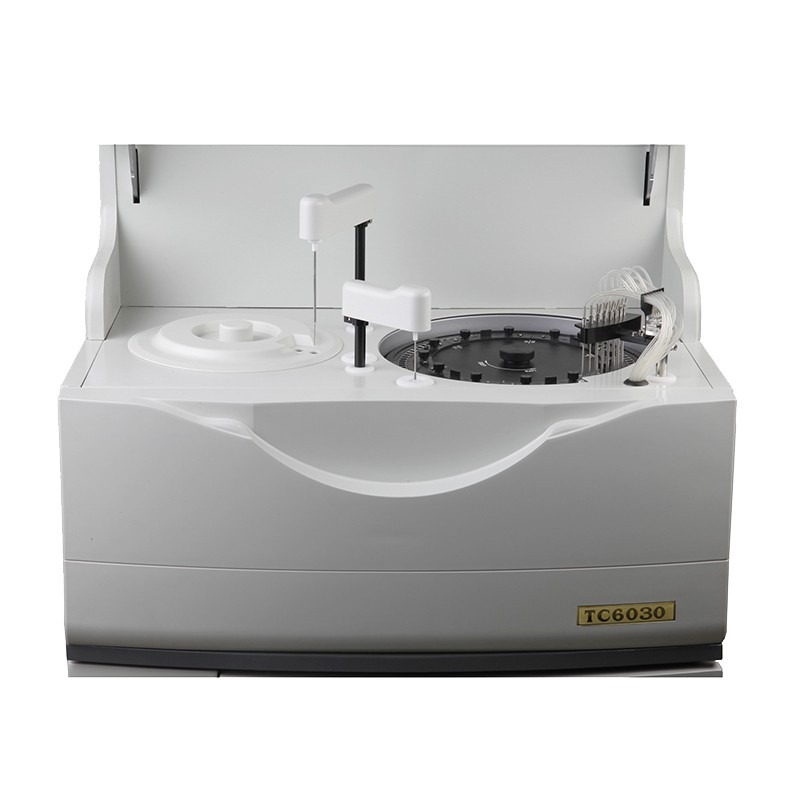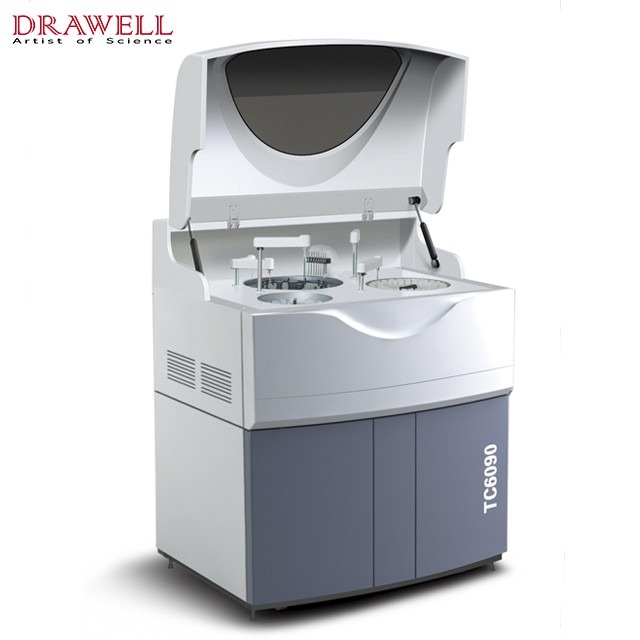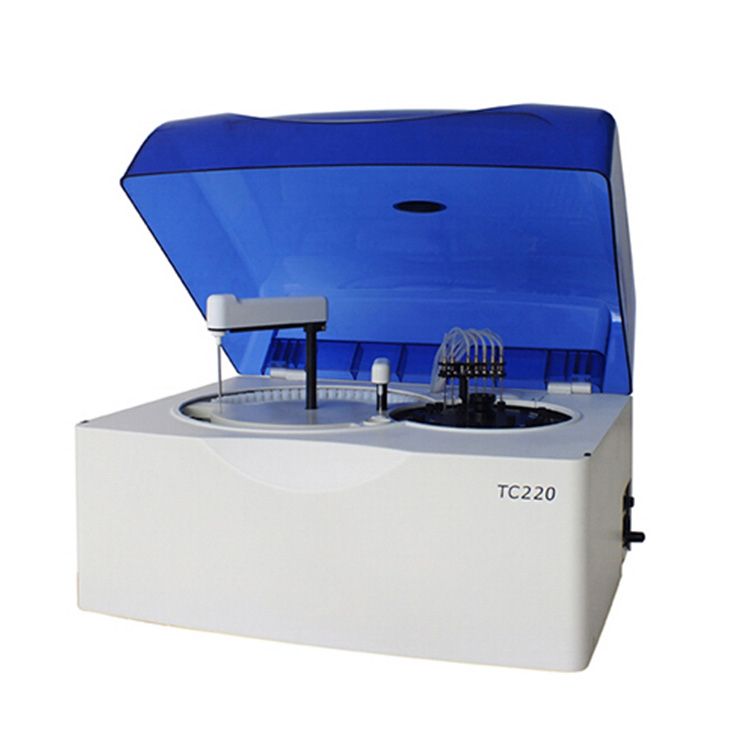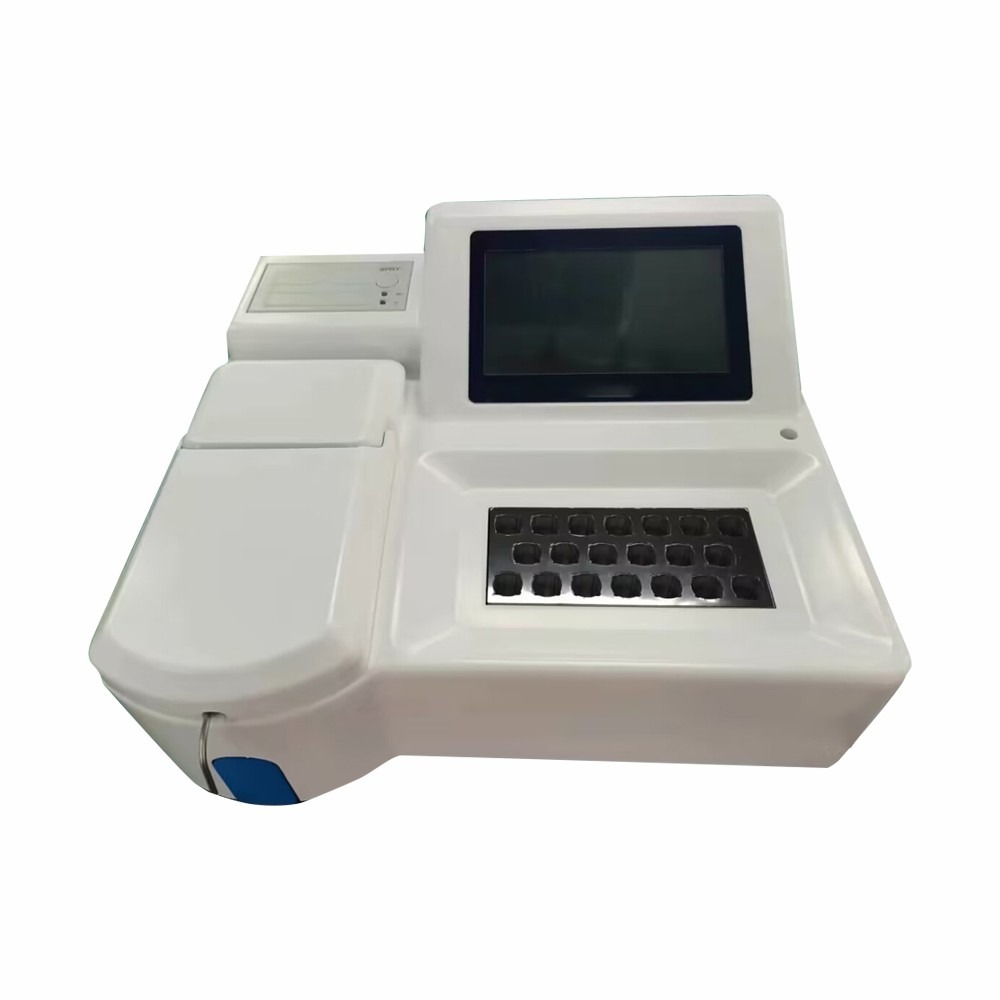The field of portable biochemistry analyzers has seen transformative advancements over recent years, driven by technological innovation and a growing demand for rapid, accurate biochemical analysis in various settings. These compact, mobile biochemistry analyzers are now at the forefront of efforts to improve healthcare delivery, environmental monitoring, and food safety, among other applications. This article explores the latest innovations and their implications for diverse applications.

Latest Innovations in Portable Biochemistry Analyzers
1. Enhanced Accuracy and Speed
One of the most significant advancements in portable biochemistry analyzers is the improvement in accuracy and speed. Modern devices are equipped with advanced sensors and microfluidic technology, which allows for precise measurement of biochemical parameters such as glucose, cholesterol, lactate, and various metabolites. These improvements are crucial for critical applications like point-of-care testing (POCT) in medical emergencies, where timely and accurate data can significantly impact patient outcomes.
2. Integration of Artificial Intelligence
Artificial intelligence (AI) has made significant inroads into portable biochemistry analyzers, enhancing their analytical capabilities. AI algorithms can process large datasets quickly, identify patterns, and provide real-time diagnostic insights. For instance, AI-powered analyzers can differentiate between various types of pathogens in a sample or predict disease progression based on biochemical markers. This integration not only improves diagnostic accuracy but also facilitates personalized medicine by tailoring treatments to individual patient profiles.
3. Connectivity and Data Management
The advent of the Internet of Things (IoT) has enabled portable biochemistry analyzers to connect seamlessly with other devices and systems. This connectivity allows for real-time data sharing with electronic health records (EHRs), cloud storage, and remote monitoring systems. Healthcare providers can access patient data remotely, enabling telemedicine and reducing the need for in-person visits. Furthermore, advanced data management systems ensure that data is securely stored and easily accessible for future reference and analysis.
4. Miniaturization and User-Friendly Design
The miniaturization of components has been a game-changer for portable biochemistry analyzers. These devices are now smaller, lighter, and more user-friendly than ever before. Handheld analyzers can be used in remote locations, fieldwork, or even at home, providing convenience and accessibility. User interfaces have also become more intuitive, often featuring touchscreen displays, voice commands, and step-by-step guidance, making them accessible to non-specialists.
5. Multiplexing Capabilities
Modern portable biochemistry analyzers often come with multiplexing capabilities, allowing them to simultaneously measure multiple analytes from a single sample. This is particularly beneficial in scenarios where comprehensive biochemical profiling is needed quickly, such as in emergency medical services or during pandemics. Multiplexing not only saves time but also reduces the sample volume required, which is especially important when dealing with limited or difficult-to-obtain samples.
6. Advances in Biosensor Technology
Biosensor technology has seen significant advancements, contributing to the enhanced performance of portable biochemistry analyzers. Novel biosensors are more sensitive, selective, and stable, enabling the detection of a broader range of biochemical substances at lower concentrations. For example, new materials like graphene and carbon nanotubes are being used to create biosensors with exceptional electrical conductivity and biocompatibility, leading to more reliable and faster readings.

Application in Various Fields of Portable Biochemistry Analyzers
This chart highlights the versatility and impact of portable biochemistry analyzers across multiple sectors, showcasing their importance in modern science and industry.
| Field | Application | Description |
| Healthcare | Point-of-Care Testing (POCT) | Enables bedside and remote diagnostics, crucial in emergencies and rural areas. |
| Chronic Disease Management | Facilitates home monitoring of diseases like diabetes and cardiovascular conditions. | |
| Infectious Disease Detection | Rapid identification of pathogens during outbreaks and pandemics. | |
| Environmental Monitoring | Water Quality Testing | Detects pollutants, heavy metals, and microbial contaminants to ensure safe water. |
| Soil Analysis | Assesses soil health by measuring nutrients, pH, and contaminants for agriculture and land management. | |
| Air Quality Monitoring | Detects airborne pollutants and allergens, crucial for monitoring indoor and urban air quality. | |
| Food Safety | Contaminant Detection | Identifies pesticides, heavy metals, and pathogens in food products to ensure safety. |
| Nutritional Analysis | Analyzes vitamins, minerals, and other nutrients to verify nutritional content in food items. | |
| Quality Control | Assesses freshness, composition, and authenticity of food products to maintain quality standards. | |
| Veterinary Medicine | Animal Health Monitoring | Monitors health markers in livestock, pets, and wildlife for prompt diagnosis and treatment. |
| Disease Surveillance | Detects zoonotic diseases in animals to prevent transmission to humans. | |
| Biotechnology & Research | Field Research | Enables real-time biochemical data collection during field studies, enhancing experimental outcomes. |
| Clinical Trials | Monitors biochemical responses of participants in real-time to improve drug development and therapy evaluations. | |
| Industrial Applications | Process Monitoring | Ensures optimal conditions and product quality in pharmaceutical, chemical, and fermentation industries. |
| Waste Management | Analyzes biochemical composition of industrial waste to ensure environmental compliance and develop treatment strategies. | |
| Education & Training | Teaching and Demonstration | Provides hands-on learning experiences for students in schools and universities. |
| Skill Development | Trains healthcare providers and scientists in the use of advanced analytical technologies. |
Challenges and Future Directions in Portable Biochemistry Analyzers
While portable biochemistry analyzers have revolutionized various fields through rapid and accurate on-site biochemical analysis, they still face several challenges that need to be addressed to fully realize their potential.
Challenges
1. Accuracy and Calibration
Maintaining high accuracy and consistency in measurements is a significant challenge for portable biochemistry analyzers. Frequent calibration is required to ensure reliability, which can be cumbersome and resource-intensive, especially in remote or resource-limited settings.
2. Limited Range of Analytes
Current portable analyzers are often limited in the range of analytes they can measure. Expanding the variety of detectable biochemical markers is necessary to broaden their applicability in diverse fields, from healthcare diagnostics to environmental monitoring.
3. Sample Preparation
Sample preparation can be a complex and time-consuming process. Portable analyzers that require minimal or no sample preparation would significantly enhance ease of use and reduce the potential for human error.
4. Data Management and Security
With the integration of connectivity features, ensuring the security and privacy of sensitive data is paramount. Robust data encryption and secure data transmission protocols are essential to protect patient information and comply with regulatory standards.
5. Cost and Accessibility
The high cost of advanced portable biochemistry analyzers can be a barrier to widespread adoption, particularly in low-resource settings. Developing cost-effective models without compromising performance is crucial to making these devices accessible to a broader user base.
6. Battery Life and Power Management
Limited battery life can restrict the use of portable analyzers in field settings where access to power sources is limited. Improving battery efficiency and developing power management solutions are essential for extended use in remote areas.
Future Directions
1. Integration of Advanced Technologies
Nanotechnology and Microfluidics: Advancements in nanotechnology and microfluidics can enhance the sensitivity and specificity of portable biochemistry analyzers. These technologies enable the detection of low-abundance analytes and improve overall device performance.
Wearable Devices: The development of wearable biochemistry analyzers can provide continuous monitoring of biochemical parameters, offering real-time data for chronic disease management and fitness tracking.
2. Artificial Intelligence and Machine Learning
The integration of AI and machine learning algorithms can significantly enhance the capabilities of portable biochemistry analyzers. AI can assist in interpreting complex data, identifying patterns, and providing predictive analytics for early disease detection and personalized treatment plans.
3. Expanded Analyte Panels
Future portable analyzers should aim to expand their range of detectable analytes, including a wider array of metabolites, proteins, and nucleic acids. This expansion will make these devices more versatile and applicable to various fields, from personalized medicine to environmental science.
4. Improved User Interface and Automation
Enhancing user interfaces to be more intuitive and incorporating automated features can simplify the operation of portable biochemistry analyzers. User-friendly designs and automation will reduce the training required for effective use, making automatic biochemistry analyzer more accessible to non-specialists.

5. Sustainable and Eco-Friendly Designs
Developing portable biochemistry analyzers with sustainable and eco-friendly materials can minimize environmental impact. Additionally, designing devices that are energy-efficient and have longer lifespans will contribute to sustainability efforts.
6. Global Health Applications
Focusing on the development of low-cost, durable, and easy-to-use portable biochemistry analyzers can have a significant impact on global health. These devices can be deployed in resource-limited settings to provide essential diagnostic services, improve disease surveillance, and enhance public health outcomes.
7. Regulatory Standards and Quality Control
Establishing standardized protocols for the calibration, validation, and quality control of portable biochemistry analyzers is essential. Regulatory frameworks need to be updated to keep pace with technological advancements, ensuring that these devices meet stringent safety and efficacy standards.
Conclusion
The latest advancements in portable biochemistry analyzers have significantly enhanced their capabilities, making them indispensable tools across various fields. As technology continues to evolve, these devices will likely become even more central to efforts in advancing healthcare, environmental monitoring, and food safety.



